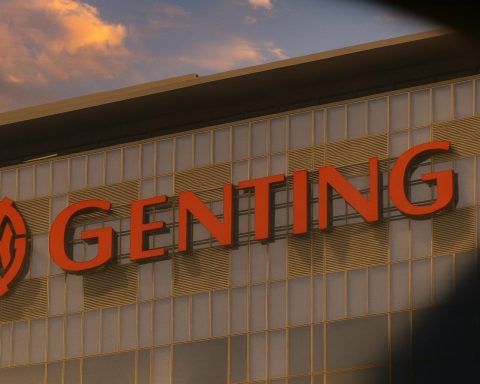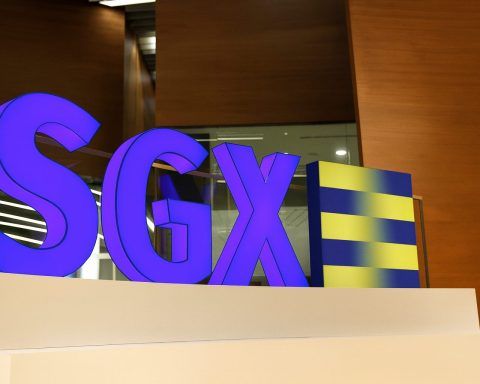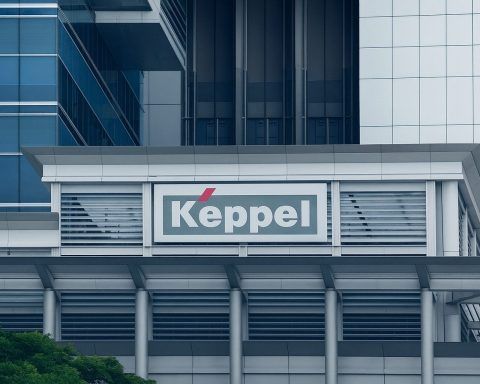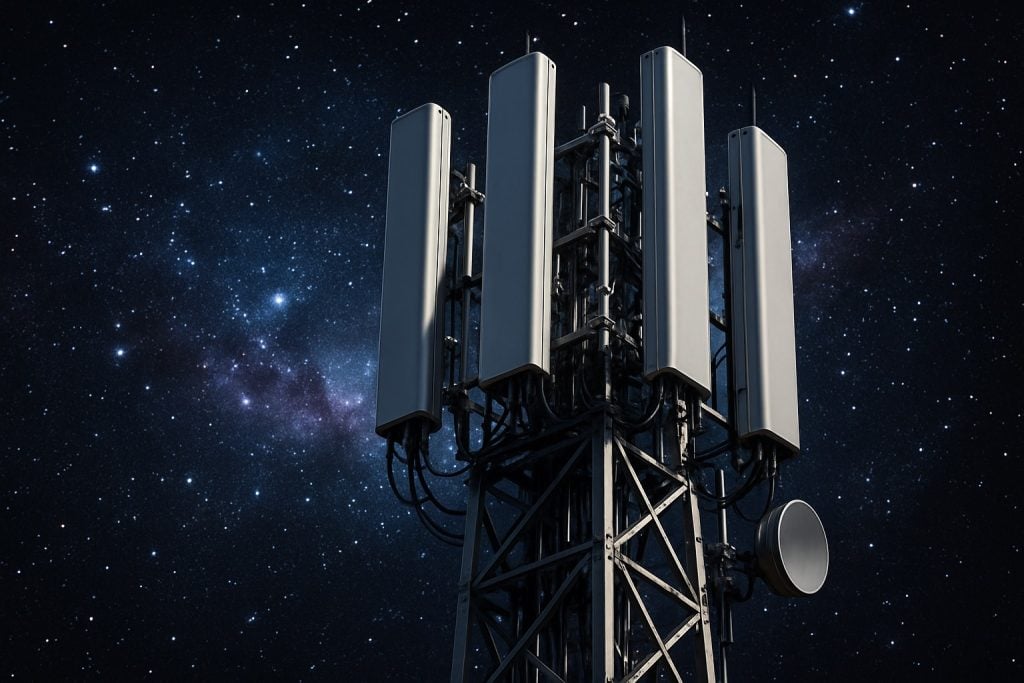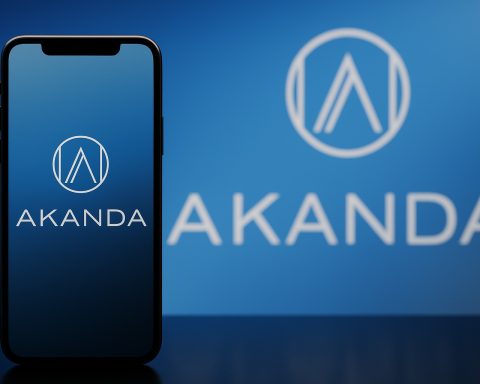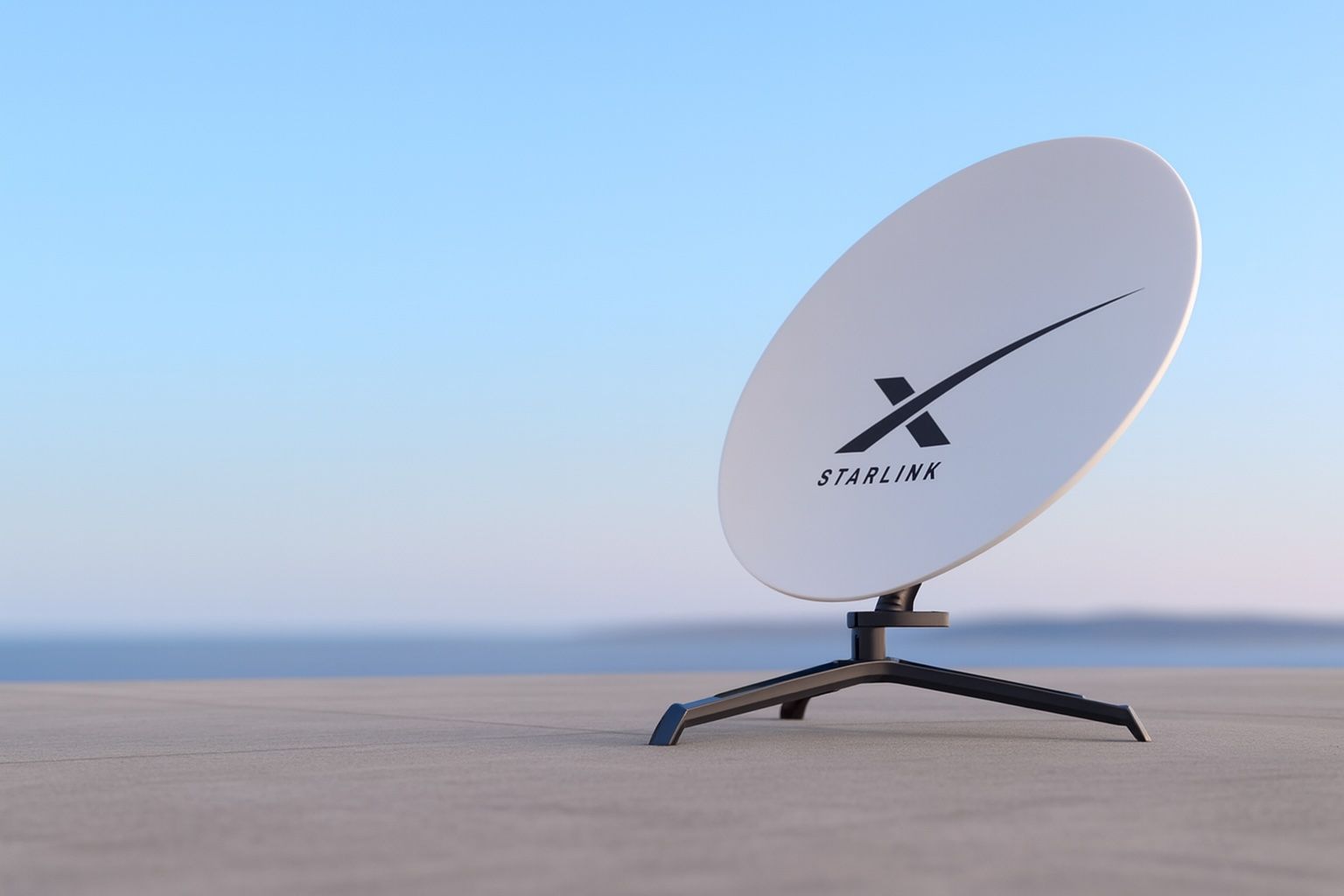- By 2025, about 99.8% of UK households are within reach of a decent broadband connection (≥10 Mbps).
- About 97–98% of UK households have an active internet subscription.
- In 2024, the average fixed broadband speed was around 157 Mbps, up from just over 50 Mbps in 2022.
- Gigabit-capable broadband is available to about 84% of UK premises as of January 2025.
- Full-fibre FTTP coverage has reached roughly 73–74% of premises as of January 2025.
- The fixed broadband market is led by BT Group with about 8.8 million broadband customers, Sky Broadband with about 5.8 million, and Virgin Media with around 5.74 million.
- 4G coverage reaches over 99% of premises and about 96% of land area; 5G coverage is around 85% of premises and 62% of landmass as of early 2025.
- Project Gigabit is a £5 billion government program aiming for 85% gigabit coverage by 2025 and near-universal coverage (99%) by 2030, including contracts to reach the hardest 15% of premises.
- The Shared Rural Network is a £1 billion initiative to extend 4G coverage to 95% of UK land area by the end of 2025.
- Satellite connectivity is growing, with Starlink available in the UK since 2021–2022 delivering up to about 200 Mbps and 20–40 ms latency, and a 2023 OneWeb program worth £8 million testing rural sites like Shetland and Lundy, plus 618 satellites launched by 2023.
Internet connectivity has become as essential as any utility in modern life. From streaming TV and working remotely to accessing public services, reliable broadband is a must-have across the United Kingdom. But how well is Britain actually connected, and how does it stack up against other countries? In this report, we dig into the current state of internet access in the UK – the hard numbers, the technologies in play (from fiber to 5G to satellites), the urban–rural digital divide, costs and affordability, government initiatives, and what the future might hold. It’s a story of rapid progress, persistent challenges, and a nation striving to bridge every last broadband gap.
The Current State of Internet Access in the UK
By 2025, the vast majority of UK residents are online. In fact, virtually all households (about 99.8%) are now within reach of a “decent” broadband connection (defined as at least 10 Mbps download) [1]. This near-universal availability is a huge achievement, ensuring almost everyone could get online if they choose. Actual internet adoption is similarly high – recent estimates indicate roughly 97–98% of UK households have an active internet subscription [2]. In other words, the availability of basic internet service is no longer the primary barrier in most places.
Not only is connectivity widespread, but speeds have improved dramatically. Just a few years ago, in 2022, the average UK broadband speed hovered just over 50 Mbps [3]. Fast-forward to 2024, and average speeds have tripled to around 157 Mbps [4]. This surge in speed is largely thanks to the rollout of faster networks – especially fiber-optic broadband and gigabit-capable cable – replacing older copper lines. In fact, gigabit broadband (1 Gbps or higher) is now available to 84% of UK premises as of early 2025 [5], up from about 78% a year prior [6]. Full-fibre (FTTP) coverage – the gold standard of fixed broadband – has jumped to roughly 73–74% of homes [7], from just over half of homes two years ago. The country is rapidly catching up in the fiber race.
To put these figures in perspective, Table 1 summarizes UK broadband coverage by performance tier:
| Broadband Coverage Metric | UK Coverage (Households/Premises) |
|---|---|
| Access to “decent” broadband (≥10 Mbps) | ~99.8% of households [8] |
| Superfast broadband (≥30 Mbps) | ~97% of households [9] |
| Gigabit-capable broadband (≈1 Gbps) | ~84% of premises (Jan 2025) [10] |
| Full-fibre (FTTP) broadband | ~73% of premises (Jan 2025) [11] |
Table 1: Fixed broadband availability across the UK. “Households” refers to residential homes; “premises” includes homes and businesses.
Such widespread high-speed access marks a significant milestone in Britain’s “broadband battle.” However, it’s not the end of the story – differences linger in how people get online (fixed lines vs. mobile vs. satellite), who provides the service, and the quality and cost of connections in different corners of the country. Let’s explore each of these aspects in turn.
Fixed Broadband: From Copper to Full Fibre
Fixed broadband (delivered via wires or cables to the home) is the backbone of UK internet access. Historically, most homes relied on DSL over copper phone lines (ADSL, and later VDSL fiber-to-the-cabinet services) or cable broadband. Today, the UK is in the midst of a transition from those legacy technologies to full-fibre networks that bring optical fiber all the way to the premises, enabling much faster speeds and more reliable service.
Coverage and Speeds: As noted, about three-quarters of UK homes can get full-fibre FTTP service as of 2025, and roughly five in six can get gigabit broadband (which includes FTTP as well as upgraded cable networks) [12]. The remaining homes are typically still served by either “superfast” fiber-to-the-cabinet (FTTC) connections or cable in areas fiber hasn’t reached yet. Overall, 97% of households can access at least a superfast (30+ Mbps) fixed line connection [13]. In practical terms, this means most families can stream 4K video, join Zoom calls, and enjoy modern internet services without hitting a network speed bottleneck. The average fixed broadband speed has more than doubled year-on-year, reflecting the rapid adoption of higher-tier packages [14]. Many customers are moving up from tens of Mbps into the 100+ Mbps or even gigabit range as full-fibre and DOCSIS 3.1 cable become available.
Key Providers and Market Share: The fixed broadband market is dominated by a handful of major Internet Service Providers (ISPs), alongside dozens of smaller players. By far the largest is BT Group, which through its brands BT, EE Broadband, and Plusnet serves about 8.8 million broadband customers – roughly one-third of the market [15] [16]. BT’s network arm (Openreach) also wholesales access to many other ISPs. The second biggest is Sky Broadband, with about 5.8 million subscribers, closely followed by Virgin Media with around 5.74 million [17]. These three collectively account for the majority of fixed-line connections. Next in line are providers like TalkTalk (several million customers) and Vodafone (which has grown its broadband base via Openreach’s network). There’s also a long tail of alternative network providers – for example, Hyperoptic, Community Fibre, CityFibre (wholesale), Zen Internet, and others – including niche operators like Glide (serving student accommodations) which has around 0.4 million users [18]. These newer entrants (“alt-nets”) have been aggressively laying fibre in competition with Openreach, contributing to the fast pace of coverage growth. The competitive landscape is thus quite lively, with incumbents and newcomers vying to connect the same neighborhoods.
Technology Trends: On the technical side, the UK’s fixed infrastructure is undergoing a major upgrade cycle. Openreach (which services the bulk of the country’s copper lines) is deploying fibre-to-the-premises at a record pace – at one point adding a new FTTP connection every 8 seconds, and reaching 17 million premises passed by the end of 2024 [19]. Meanwhile, Virgin Media O2 has upgraded its cable network to DOCSIS 3.1, enabling gigabit speeds over coaxial cable, and has plans to convert fully to fiber by around 2028. These efforts, combined with alt-net projects (often supported by private investment and government vouchers), have made the UK one of Europe’s fastest-growing fiber markets [20]. After lagging behind for years, Britain is now catching up: about 71% of UK homes were covered by FTTH/B by late 2024 – roughly on par with the European average (~69%) – whereas countries like Spain and France are slightly ahead with over 80–90% fiber coverage [21]. The “battle” to fiber-upgrade the nation is well underway, and if plans hold, the UK government estimates 96% full-fibre coverage by 2027 [22].
It’s worth noting that traditional copper-based ADSL is rapidly fading from relevance – areas that still lack fiber or cable are increasingly served by interim solutions like Fixed Wireless Access (FWA) or slated for future rollout. By 2025, only tens of thousands of mostly rural premises remain without even a 10 Mbps fixed connection [23], and these are targets for subsidy programs or alternative technologies (more on that later).
Mobile Broadband: 4G, 5G and Wireless Access
Alongside fixed lines, the UK enjoys extensive mobile broadband coverage. The country was an early leader in 4G LTE deployment and has been quickly rolling out 5G networks in recent years. Mobile internet is not just for phones – many households also use cellular networks for home broadband via data dongles or 4G/5G routers, especially where fixed broadband is slow or unavailable.
4G Coverage: The UK’s 4G networks blanket almost the entire population. Over 99% of premises (homes and offices) are within 4G signal range of at least one operator [24]. In terms of geography, about 96% of the UK’s land area has outdoor 4G coverage from at least one provider [25] – a crucial factor for rural communities, transport routes, and IoT devices in remote areas. This coverage has improved over the last few years partly thanks to the Shared Rural Network initiative (a partnership between government and operators to extend rural coverage). All four mobile network operators have been plugging remaining coverage holes; for example, in rural Wales, the proportion of area with 4G from all four operators jumped to 72% in 2024 (from 59% prior) [26]. In short, 4G is now an ubiquitous service, effectively the universal service for mobile data across the UK.
5G Rollout: The next-generation 5G networks are expanding quickly, though not yet as universally present as 4G. As of early 2025, around 85% of premises (population coverage) can get a 5G signal from at least one operator, while roughly 62% of the UK’s landmass has some level of 5G coverage [27]. The disparity between population and geography highlights that 5G deployment began in urban centers and towns, with rural 5G still in early stages. That said, progress is steady – for instance, 5G coverage (outdoor) in Scotland reached 91% of premises by 2024 [28], and in England up to 92–96% (depending on confidence level) [29]. Major cities now enjoy deep 5G coverage, delivering typical download speeds in the 100–300 Mbps range (and much higher peak speeds in ideal conditions). The government’s goal is for “standalone 5G or better to reach all populated areas by 2030” [30] (“5G-plus” refers to future enhancements), indicating a long-term plan to blanket even remote villages with advanced wireless broadband. For now, if a 5G signal isn’t available, 4G is the fallback – and as noted, 4G is essentially everywhere people live.
Mobile Providers and Market: The UK has four mobile network operators (MNOs) – EE, O2 (Virgin Media O2), Vodafone, and Three. EE (part of BT) has traditionally led in coverage and subscriber share, and a recent survey showed EE as the most popular provider with about 22% customer share, followed by O2 (~18%), Vodafone (~12%), and Three (~9%) [31]. These “big four” collectively serve the majority of the ~89 million active mobile subscriptions in the UK [32]. In addition, dozens of Mobile Virtual Network Operators (MVNOs) – like Sky Mobile, Tesco Mobile, Giffgaff, Smarty, etc. – ride on those networks, offering consumers a wide range of brands and plans. (Notably, many MVNOs use O2’s network, which means O2’s infrastructure actually underlies a very large share of mobile users overall.) Competition in mobile is robust, and users benefit from generally good coverage and continually improving network speeds. According to Ofcom and independent benchmarks, UK mobile users enjoy average download speeds in the tens of Mbps on 4G and higher on 5G, comparable to other Western European countries. One continuing “battle” in mobile is extending coverage to remote locales – something being addressed through new mast sharing agreements and spectrum obligations for rural areas.
Wireless Home Broadband: An increasing number of consumers are using mobile networks as their home broadband solution. All four MNOs offer data plans or routers for Fixed Wireless Access over 4G/5G. This can be especially appealing in rural or temporary settings – for example, Three’s 5G home broadband has been popular in some cities as a plug-and-play alternative to fixed lines. As 5G coverage grows, FWA could play a larger role in broadband competition, offering hundreds of Mbps without a wired connection. Ofcom data shows that by 2023, fixed wireless broadband (whether via 4G/5G or specialist wireless ISPs) was available to about 95% of premises, though take-up remains relatively small so far [33]. Still, it’s a vital option for some communities and part of the overall connectivity toolkit.
Satellite Internet: A New Frontier for Remote Regions
Even with the extensive fixed and mobile networks, there remain hard-to-reach corners of the UK – think of very remote hamlets, mountain valleys, or small islands – where running fiber or maintaining cell towers is prohibitively expensive. Enter satellite broadband as the solution from above. Historically, satellite internet (from geostationary satellites) was seen as a last resort due to high latency and modest speeds. But recent advances in Low Earth Orbit (LEO) satellite constellations – most famously SpaceX’s Starlink, and the UK-backed OneWeb – have dramatically improved the performance of satellite internet, making it a viable option for high-speed connectivity in remote areas.
Starlink in the UK: Starlink became available in the UK in 2021–2022 and has quickly gained traction in rural communities. It can deliver up to ~200 Mbps download speeds in areas that previously struggled to get even a few Mbps – roughly four times faster than the UK’s average broadband speed was just a couple years ago [34]. Latency (ping) on Starlink is around 20–40 ms, far better than legacy satellites, enabling video calls and streaming with ease. Recognizing this potential, the UK government in 2022 launched trial projects using Starlink to connect a dozen extremely isolated sites – including a mountain rescue base in the Lake District and a 12th-century abbey in North Yorkshire – that were “stuck in the digital slow lane” with no decent terrestrial options [35] [36]. The trials showed that satellites can be a quick fix for places where laying cables is impractical. After initial success, officials expanded their approach to incorporate satellite broadband as a component of the national connectivity strategy.
OneWeb and Others: The UK has a particular stake in OneWeb, a LEO satellite network in which the government invested in 2020. OneWeb (now merging with Eutelsat) is not yet a direct-to-consumer service like Starlink; instead, it focuses on partnering with telecom providers to deliver connectivity. In 2023, the government announced an £8 million program to test OneWeb’s network for rural broadband, with trial sites in the far-flung Shetland Islands and Lundy Island off England’s coast [37] [38]. The idea is that OneWeb could provide backhaul for community Wi-Fi or 4G/5G hotspots, or even direct home connections via specialized equipment. With 618 satellites launched (as of 2023) and global coverage achieved up to the 50th parallel (which includes all of the UK) [39], OneWeb is poised to be a key player in reaching the final 0.3% of UK premises that fiber won’t reach [40]. Other satellite systems on the horizon include Amazon’s Project Kuiper and Europe’s proposed IRIS² constellation, which could further expand capacity and competitive options for satellite internet later in the decade.
Current Usage: While still a niche solution, satellite broadband usage is growing in the UK. Ofcom’s data indicates that the number of live satellite broadband connections roughly doubled from 2022 to 2023 [41]. In England alone, satellite ISP customers increased from about 34,000 to 70,000 in one year [42], and Scotland saw a similar jump (largely driven by Starlink). These are small figures in the grand scheme (tens of thousands versus millions on wired or mobile broadband), but they represent a lifeline for those users – often rural households or businesses that genuinely had no other fast option. The cost remains relatively high (Starlink hardware and subscription runs ~£75–£100 per month), so it’s not a mass-market choice where cheaper alternatives exist. But for remote regions in the UK – and indeed beyond the UK, in developing areas or disaster recovery scenarios – LEO satellites are increasingly recognized as game-changers in the quest for universal internet access.
In summary, satellite internet now serves as the “last mile of last resort” in Britain’s connectivity arsenal, ensuring even the hardest-to-reach places need not be left offline. The government’s ongoing trials and subsidies for very hard-to-reach premises suggest that satellites will play a continuing role in achieving 100% coverage.
Urban vs. Rural: Bridging the Digital Divide
One of the central truths about broadband in the UK (as in many countries) is the geographic divide between urban and rural areas. Densely populated cities and towns have benefitted from rapid upgrades – often enjoying multiple competing fiber networks – while sparse rural communities have been slower to see the same level of investment. This gap, however, is gradually closing due to focused public and private efforts.
Coverage Disparities: The difference in gigabit-capable coverage is telling. In early 2024, about 99% of urban premises in the UK’s towns and cities had access to gigabit broadband, compared to only 49% of rural premises [43]. Put another way, if you lived in a city, it was almost guaranteed you could get ultrafast internet, whereas in the countryside it was essentially a coin flip. Superfast broadband (≥30 Mbps) has much better rural reach – in the 90%+ range in most rural areas – but a small percentage of remote households still lack even that. As of 2025, roughly 48,000 premises nationwide remain unable to get 10 Mbps fixed broadband (down from 58,000 a year before) [44]. These are predominantly in rural and isolated locations. While 48k is a tiny fraction of UK households, for those families it means no workable home internet without special solutions.
Closing the Gap: The “battle” to bring rural areas up to par involves multiple strategies:
- Government Subsidy Projects: Through programs like Project Gigabit (the national broadband build-out program) and its predecessor Broadband Delivery UK, the government is funding rural fiber deployment where commercial viability is low. For example, a £108 million Project Gigabit contract in Cumbria (northern England) will connect 60,000 rural premises via fiber [45]. Similar contracts have been awarded across hard-to-reach parts of England, Wales, Scotland, and Northern Ireland. The goal is to push gigabit coverage into the high 80s percentage in rural areas by the mid-2020s, and ultimately to 88%+ of rural premises by 2027 [46] (with the remainder likely served by wireless or satellite).
- Vouchers and Community Schemes: The Gigabit Broadband Voucher Scheme offers subsidies (recently increased up to £4,500 for homes) to help cover installation costs in rural communities [47]. This empowers clusters of residents to collectively fund fiber extensions to their area. Thousands of properties have been hooked up via vouchers in villages that operators might otherwise skip.
- Alternative Networks in Rural Areas: Smaller fiber providers have targeted market towns and villages, often with local enthusiasm. For instance, county projects and community-led ISPs have laid fiber in parts of Wales, the Scottish Highlands, and rural England – sometimes ahead of the bigger players. These efforts incrementally chip away at rural not-spots.
- Mobile and Wireless Solutions: Where cables won’t go, 4G/5G and fixed wireless are stepping in. Rural 4G coverage has improved thanks to new mast agreements (the Shared Rural Network aims for 95% UK geographic 4G coverage by 2025), and some rural homes use 4G antennas for home broadband. There are also wireless ISP initiatives using radio links to beam internet into valleys. While not as future-proof as fiber, they can ensure no community is left completely offline in the interim.
- Satellite for the Final Few: As discussed, LEO satellites are being offered to the extremely remote end of the spectrum. The government explicitly identified ~0.3% of premises (around 100k homes) as “Very Hard-to-Reach” where even Project Gigabit may not go [48] – for these, satellite or wireless is the answer. Trials in Snowdonia and North Yorkshire showed that even an isolated mountain campground can get 150+ Mbps via Starlink [49].
Thanks to all these measures, the digital divide is narrowing. Superfast coverage in rural UK jumped from about 82% in 2018 to 93-95% by 2023 [50] [51]. Gigabit coverage in the countryside is rising fast from that 49% base. Importantly, rural users are also starting to adopt the new services: for example, rural Scotland saw the biggest jump in superfast uptake in 2024, after many new fiber connections went live [52] [53]. This is vital for “levelling up” – ensuring that living in a beautiful but remote village doesn’t mean accepting second-class internet.
Of course, challenges remain. Rural rollouts can be slow and logistically complex (think digging fiber across miles of farmland or submarine cables to island communities). Even mobile signals in hilly terrain require more towers and cooperation with local planning. But the trajectory is positive. With strong policy support and technology options, the UK is inching toward the goal of eliminating the rural broadband gap within the next few years.
Costs and Affordability of Broadband
Connectivity isn’t just about cables and signals – it’s also about price and affordability. The UK has one of the more competitive telecom markets in the world, which has generally kept broadband prices moderate by international standards. Let’s examine how much internet access costs in Britain and whether people can afford it.
Average Broadband Bills: The typical home broadband subscription in the UK costs around £26 per month as of early 2025 [54]. This average has remained relatively stable (in the mid-£20s) over the past several years, despite huge upgrades in speed. In real terms, consumers are getting far more bang for their buck now – the cost per megabit has plummeted as faster packages become standard. For instance, between 2019 and 2023, broadband prices actually decreased in real terms, particularly for high-speed tiers (300+ Mbps plans fell about 60% in price per speed unit) [55]. Even though the average monthly fee spiked to ~£31 in 2024 (partly due to inflation and many users being out-of-contract), it dropped back down to ~£26 by 2025 as providers introduced discounts and people switched to new deals [56] [57].
From a global perspective, UK broadband is quite affordable. One analysis ranked the UK the 5th most affordable country for broadband when considering price relative to income [58]. The average bill (~£26) equates to about 1.16% of monthly earnings for the average Briton [59] – a share only beaten by a few countries like Israel and France. In plain terms, broadband in Britain is a better bargain (relative to salaries) than in the majority of the world.
Regional and Service Differences: Within the UK, broadband costs are fairly uniform, though there are slight regional variations. Wales, for example, had the lowest average broadband price in 2023/24 at about £26.87 per month, while Northern Ireland was highest around £28.04 [60]. Table 2 shows the averages by UK nation:
| Country | Average Broadband Cost (2023/24) |
|---|---|
| England | £26.88 [61] |
| Scotland | £27.12 [62] |
| Wales | £26.87 [63] |
| Northern Ireland | £28.04 [64] |
Table 2: Average monthly home broadband cost by UK country (Source: Uswitch). Differences are relatively small – N.I. being ~4% higher than Wales on average.
Interestingly, Northern Ireland’s slightly higher bills may reflect its higher full-fibre availability (since many N.I. households can access gigabit fiber, they may choose pricier ultra-fast plans) [65]. Conversely, regions where slower ADSL is common might pay less, but for much lower speeds – not exactly a good trade-off. On the whole, though, competition ensures that whether you’re in London or a village in Cornwall, you have access to similar broadband packages at similar prices.
Affordability Concerns: Despite reasonable average prices, broadband affordability can still be an issue, especially for low-income households. As of early 2025, about 23% of UK households reported struggling to afford their communication services (internet, phone, etc.) [66] [67]. With the cost-of-living pressures and everything from schooling to job applications moving online, being unable to pay for internet can deepen social disadvantages. One response to this has been the introduction of social tariffs – discounted broadband plans for customers on certain benefits (welfare support). These plans, offered by a subset of ISPs, can be as low as £10–£20 per month for basic service. However, awareness is very low: roughly 70% of eligible consumers had never heard of social tariffs as of 2025 [68]. Consequently, uptake of these special plans is extremely limited (only tens of thousands of users nationwide). Ofcom and consumer advocates have urged providers to promote social tariffs more and to make switching to them easier, as a way to connect families who might otherwise have to cut off internet due to cost.
Another factor is customers paying more than they need to. Many Brits don’t regularly switch providers or renegotiate after their initial contract, meaning they slide onto out-of-contract prices which can be significantly higher. On average, an out-of-contract broadband customer in the UK pays about 25% more than one who is in a discounted contract period [69]. This loyalty penalty has been criticized. Regulators have pushed for transparency and easier comparison tools, and indeed many providers now notify customers when their contract is up and offer retention deals. Still, millions potentially overpay simply due to inertia.
Overall Spend: Despite these issues, internet access in the UK remains a relatively small household expense for most. The combination of unlimited data usage (virtually all fixed broadband is uncapped) and moderate pricing means that people can use the internet freely without metered costs. Mobile data, too, has become cheaper, with many plans offering generous data allowances or even unlimited data at prices far below what they were a decade ago. For those who truly cannot afford it, public libraries and community centers provide free internet access points (though the shift toward needing home internet – for remote work or school – makes public access only a partial solution).
In summary, the UK’s broadband services are reasonably priced and globally competitive, but ensuring affordability for all remains part of the battle. Efforts continue to raise awareness of low-cost options and to encourage providers to keep prices in check, so that no one is left offline due to financial barriers.
Infrastructure Development and Government Initiatives
The rapid improvements in UK connectivity did not happen by accident – they are the result of deliberate policy decisions, regulatory frameworks, and industry investments. The government and Ofcom (the telecom regulator) have been actively involved in steering the country toward its broadband and mobile targets. Here are some key initiatives and trends shaping Britain’s digital infrastructure:
Project Gigabit: This is the UK government’s flagship program (backed by £5 billion funding) to expand gigabit-capable broadband nationwide. Initially, the government ambitiously aimed for 100% gigabit coverage by 2025, but this was later revised to 85% by 2025, with an aim of near-universal (99%) coverage by 2030 [70] [71]. Thanks to Project Gigabit contracts and commercial build, the interim 85% goal is on track to be met by the end of 2025 [72]. Under Project Gigabit, dozens of regional fiber rollout contracts have been awarded to suppliers (ranging from Openreach and Virgin to smaller builders like Fibrus or CityFibre) to cover the hardest 15% of premises that the market alone wouldn’t reach. Progress is evident in areas like Cumbria, Northumberland, Pembrokeshire, and others where fiber is now reaching hamlets that never had it before [73] [74]. The program also encompasses the voucher scheme (discussed earlier) to empower local communities. Overall, Project Gigabit represents an unprecedented government commitment to telecom infrastructure, akin to a modern “digital railway” expansion.
Mobile Spectrum and Coverage Commitments: On the mobile side, the government in collaboration with the four MNOs launched the Shared Rural Network (SRN) in 2020 – a £1 billion project to eliminate rural mobile not-spots. The goal is to extend 4G coverage to 95% of UK land area by end of 2025, up from roughly 92% in 2020, by sharing infrastructure and filling gaps [75] [76]. Each operator also has obligations from spectrum auctions (e.g. the 700 MHz band auction) to cover specific percentages of the population and UK landmass with 5G by certain deadlines. These initiatives ensure that even remote roads and farms will have mobile internet and voice service, which is essential for safety and economic inclusion.
Regulation and Competition: Ofcom, as regulator, has taken steps to foster a competitive yet fair broadband market. A major step was the legal separation of Openreach from BT, completed in 2017, which aimed to give all ISPs equal access to the national telecom network. Ofcom also introduced duct and pole access rules, letting rival fiber builders use Openreach’s underground ducts and telephone poles to run their own cables – reducing duplication of civil works. This regulatory environment has encouraged dozens of alt-net providers to spring up and invest, knowing they can interconnect or use existing infrastructure where feasible. Additionally, Ofcom has kept wholesale pricing under review to balance the need for Openreach to fund fiber rollout with the need to keep retail prices reasonable. The result has been a burst of fiber competition without a price war that undermines investment – a delicate balance.
Another area of regulation is switching and consumer protection. In 2023, new rules (“One Touch Switch”) were introduced to make it easier for consumers to switch broadband providers with minimal service loss (even across different networks). Ofcom also mandates transparency in mid-contract price rises (most providers now tie annual price increases to CPI inflation rates, which has been controversial but at least is disclosed up front). And there are social tariff guidelines to pressure providers into offering affordable options for low-income users [77] [78].
Investment and Innovation: The UK’s telecom infrastructure is largely funded by private investment, but there have been some public investments in innovation – for example, the 5G Trials programme which funded testbeds for new 5G applications (like rural healthcare or smart farming projects). Looking ahead, the government’s Wireless Infrastructure Strategy (published 2023) outlines plans for beyond 5G, including making spectrum available for 6G research and ensuring the UK is at the forefront of next-gen mobile tech by 2030 [79]. There’s also interest in new technologies like open radio access networks (Open RAN) to diversify mobile equipment supply, especially after the decision to purge Huawei gear from 5G networks due to security concerns (UK operators have deadlines to remove high-risk vendor equipment in coming years). The policy emphasis is on building secure, resilient, and world-class networks – from quantum-secure satellites to full-fibre in every exchange.
Digital Inclusion and Skills: While not infrastructure per se, the UK government has digital inclusion strategies to go hand-in-hand with physical network rollout. This includes funding for digital skills training, libraries, and community hubs, so that once broadband arrives, people actually benefit from it. The Online Safety and Media Literacy initiatives by Ofcom also play a role in ensuring people use the internet confidently and safely. Essentially, there’s recognition that the broadband battle isn’t won simply by laying fiber – it’s won when society can fully utilize that connectivity.
To sum up, Britain’s broadband and mobile advancement has been propelled by proactive government policy and regulation aimed at boosting coverage and competition. From rural fiber subsidies to spectrum licenses and forcing incumbent networks open, these measures have helped create a dynamic market that is delivering rapidly improving connectivity. The “beyond” in our title hints at broader implications – and indeed, the UK’s approach (mixing public funds, private competition, and tech-neutral solutions including satellite) offers a case study that other nations watch closely.
The UK in a European Context
No country’s connectivity exists in a vacuum – it’s helpful to compare the UK’s performance with that of other developed nations, especially in Europe. The UK was once seen as a broadband laggard in certain aspects (particularly fiber deployment), but the picture in 2025 is more nuanced.
Coverage and Speeds: In terms of basic broadband coverage, the UK is on par with the best – virtually 100% of homes can get at least a 10 Mbps connection, similar to countries like Germany, France, or the Netherlands which also report ~99% coverage of basic broadband. On superfast (≥30 Mbps) coverage, the UK (~97% households) is among the leaders, thanks largely to the extensive cable and VDSL network; many EU countries also hover in the mid-90s, with a few smaller nations at 100%. The real differentiator now is gigabit and full-fibre coverage. Here, the UK’s ~84% gigabit and ~74% full-fibre availability [80] is impressive, but still a bit behind Europe’s frontrunners. Spain, for example, has achieved around 90% FTTH coverage and essentially complete gigabit coverage (through fiber and cable) – the result of aggressive rollout by Telefonica and others over the past decade. France too has surpassed 80% FTTH and is pushing toward the high 80s in gigabit availability [81]. Smaller nations like Portugal, Denmark, and Sweden also boast very high fiber penetration. On the other hand, the UK is now ahead of some large peers that started late – Germany, for instance, only had around 70% gigabit coverage as of 2024 (due to heavy reliance on slower DSL until recently), though it’s climbing fast with cable upgrades and new fiber builds. Italy likewise was historically behind but is catching up. The FTTH Council Europe noted that the UK was the fastest-growing major market for fiber in absolute terms in 2024 (adding over 4 million homes passed in one year) [82], highlighting that the UK is sprinting ahead after a slow start.
In terms of average speeds, international speed tests (like Ookla’s Speedtest Global Index) typically rank the UK somewhere in the middle among EU countries – not as fast as the likes of Spain or Switzerland, but comparable to France and ahead of Germany. The UK’s average fixed broadband speed being ~150 Mbps in 2024 is a significant rise; some European countries with extensive fiber (like Sweden) might average higher (200+ Mbps), whereas others with more mixed infrastructure average lower. For mobile speeds, UK 5G networks have delivered very high peaks in tests, but broad averages are tempered by the still-large role of 4G; overall mobile speed rankings put the UK roughly mid-pack in Western Europe. However, the UK has an excellent record on mobile coverage quality and competitive pricing.
Pricing: Speaking of pricing, UK consumers generally pay less for broadband than those in many other European countries. While direct comparisons are tricky (different packages, bundles, currencies), the UK’s broadband as a fraction of income (1.16%) is notably better than the European average [83]. France is one of the few slightly better cases (1.14% of income) [84], thanks to low-cost fiber offerings there. But in countries like Germany or Italy, broadband can take a higher share of income. Additionally, the UK’s practice of offering unlimited data by default contrasts with some countries where data caps or speed tiers based on usage still exist – giving UK users more freedom to consume data-heavy services without extra charges.
Policy and Goals: The EU has its Digital Decade goals of delivering gigabit connectivity to all households by 2030 and 5G everywhere by 2030. The UK’s targets (85% gigabit by 2025, virtually all by 2030; and comprehensive 5G by 2030) are in line with these, despite the UK no longer being an EU member. In many ways, the UK’s strategy is quite aligned with European trends: heavy emphasis on fiber, encouragement of infrastructure competition, and supplementing with 5G and satellite for complete coverage. One difference is that some EU countries have used more direct public ownership or municipal broadband (e.g. Stockholm’s city fiber, or government-owned wholesale networks) – whereas the UK relies more on private industry with government subsidies. Both models have their pros and cons, but the end results in terms of connectivity are converging.
A noteworthy “beyond” angle is how the UK’s experience can inform global connectivity efforts. The combination of fixed, mobile, and satellite in the UK’s rural strategy, for example, mirrors what’s needed in many parts of the world. Also, the UK’s competitive ISP market – with dozens of providers – contrasts with some countries that have only 2 or 3 big ISPs, often leading to higher prices. The UK shows how competition and strong regulation can benefit consumers (though it also resulted in fragmentation and some overbuild in urban areas).
In summary, the UK by 2025 has moved into a respectable position among developed countries for internet access. It may not top every league table, but it is no longer the fiber straggler it once was. If the current trajectory continues, Britain is set to be one of the first large nations to pretty much achieve the “gigabit for all” vision, right alongside its European neighbors.
Future Outlook and Challenges
Britain’s broadband battle is well advanced, but not fully won. Looking ahead, several challenges and opportunities will define the next chapter of internet access in the UK (and beyond):
- Reaching the Final Few Percent: The hardest part of any nationwide infrastructure project is the last bits – the remote cottages, the off-grid communities. By 2030, the UK expects to have fiber or gigabit to nearly everyone, but those remaining remote users will require continued creative solutions. Satellite constellations will likely expand (Starlink’s network grows monthly, and OneWeb/ESA initiatives will mature). Also, High Altitude Platforms (HAPS) – essentially communication drones or balloons – are an experimental tech that could fill coverage gaps in future. Keeping those final households connected without untenably high costs will remain a focus. The government may need to maintain subsidy schemes or even consider broadband as a basic entitlement, akin to the postal service, to ensure no one is left behind.
- Adoption and Digital Skills: As infrastructure becomes ubiquitous, the attention shifts to adoption – making sure everyone actually uses the internet to improve their lives. There will still be a minority (perhaps older or vulnerable individuals) who don’t have internet by choice or lack of skills. Digital inclusion programs will continue to be important to bring those folks online. Additionally, with the network built, maximizing its benefits (telehealth, remote education, smart city services, etc.) will be the new challenge. This requires not just technology, but user education and service innovation.
- Network Convergence and Upgrades: We will likely see further convergence of fixed and mobile networks. The merger of Virgin Media and O2 is one example – offering bundled mobile and broadband. In the future, 5G and 6G could blur the line with fixed broadband (e.g., a 6G hub in your home providing multi-gigabit wirelessly). Wi-Fi 7 and other advances will up the capacity of in-home wireless, complementing multi-gigabit fiber to the home. On the fixed side, the next generation of fiber tech (like XGS-PON) can deliver 10 Gbps to consumers; some UK providers already offer 2–3 Gbps plans, and we can expect higher tiers in coming years for those who need them (for example, for VR/AR, metaverse applications, or simply massive data transfers).
- Sustainability and Resilience: As networks become critical infrastructure, there’s a focus on making them resilient and sustainable. Future challenges include energy efficiency (data centers and networks consuming lots of power – there’s push for greener tech) and resilience against outages (for instance, ensuring backup routes and power for telecoms in storms or cyberattacks). The UK has been working on telecoms security (the Telecom Security Act) which mandates stronger protections against threats. And climate change means designing networks that can withstand floods or heatwaves is a consideration.
- Industry Consolidation and Economics: The UK’s vibrant market with many fiber builders could face a shakeout. We’ve already seen some consolidation (larger fiber firms acquiring smaller ones [85]). Over the next few years, some of the dozens of alt-nets may merge or exit if they can’t achieve scale. This is a natural market cycle. The hope is that enough healthy competition remains (perhaps a “big three” of infrastructure: Openreach, Virgin Media O2, and a third consolidated alt-net group). Ofcom will have to ensure that as the market matures, no monopoly re-forms and that wholesale access keeps competition alive at the retail level. For mobile, a potential merger of Three and Vodafone has been speculated, which would reduce four MNOs to three – regulators will weigh the impact on consumer pricing versus the benefits of scale for 5G investment. These decisions will shape the competitive landscape and, by extension, the consumer experience.
- Beyond UK – Global Connectivity: The UK will also play a role in global connectivity improvements. As a leading economy, its approach to things like rural broadband or 5G rollout can serve as a model (or cautionary tale) for other countries. Moreover, UK companies and satellites will connect other parts of the world – e.g., OneWeb aiming to serve Arctic regions and developing countries, or British expertise in regulation contributing to international standards. The “broadband battle” is worldwide, with an aim to connect the 3+ billion people who are still offline. Innovations proven in the UK might help crack connectivity problems elsewhere.
In conclusion, the United Kingdom’s journey to ubiquitous, fast internet access has made remarkable progress. Current statistics show a country where nearly everyone can get online and more and more people enjoy ultrafast speeds. The mix of fixed fiber networks, expansive mobile coverage, and cutting-edge satellite solutions has Britain on track to achieve what was unthinkable a decade ago: broadband for all, whether in downtown London or on a remote Scottish isle. Yet, the battle isn’t over – it’s simply entering a new phase. The focus is shifting from building networks to using networks – ensuring affordability, digital literacy, and leveraging connectivity for economic and social good. The UK’s experience underscores a truth that extends “beyond”: that connectivity is not a luxury, but a necessity, and with determined effort, it’s possible to bring everyone into the digital fold. Britain’s broadband story, with its successes and lessons learned, will undoubtedly inform and inspire the next leaps in connecting our world.
Sources:
- Ofcom Connected Nations Reports (2024–2025) [86] [87] [88]
- Uswitch Broadband and Mobile Statistics 2024–25 [89] [90] [91] [92]
- UK Government Press Releases and Trials (DCMS) [93] [94]
- ISPreview UK and Telecoms trade news [95] [96] [97]
- House of Commons Library & Point Topic research [98] [99]
- Data from ONS and international benchmarks [100] [101]
References
1. www.uswitch.com, 2. www.ibisworld.com, 3. www.theguardian.com, 4. www.uswitch.com, 5. www.csimagazine.com, 6. www.uswitch.com, 7. www.csimagazine.com, 8. www.uswitch.com, 9. www.uswitch.com, 10. www.csimagazine.com, 11. www.csimagazine.com, 12. www.csimagazine.com, 13. www.uswitch.com, 14. www.uswitch.com, 15. www.uswitch.com, 16. www.uswitch.com, 17. www.uswitch.com, 18. www.uswitch.com, 19. www.telecoms.com, 20. www.telecoms.com, 21. www.telecoms.com, 22. www.advanced-television.com, 23. www.csimagazine.com, 24. www.ofcom.org.uk, 25. www.ofcom.org.uk, 26. www.ofcom.org.uk, 27. www.ofcom.org.uk, 28. www.ofcom.org.uk, 29. www.ofcom.org.uk, 30. www.ispreview.co.uk, 31. www.uswitch.com, 32. www.ofcom.org.uk, 33. www.uswitch.com, 34. www.theguardian.com, 35. www.gov.uk, 36. www.theguardian.com, 37. www.ispreview.co.uk, 38. www.ispreview.co.uk, 39. www.ispreview.co.uk, 40. www.ispreview.co.uk, 41. www.ofcom.org.uk, 42. www.ofcom.org.uk, 43. www.advanced-television.com, 44. www.csimagazine.com, 45. www.gov.uk, 46. www.advanced-television.com, 47. www.gov.uk, 48. www.ispreview.co.uk, 49. www.theguardian.com, 50. www.advanced-television.com, 51. www.advanced-television.com, 52. www.ofcom.org.uk, 53. www.ofcom.org.uk, 54. www.uswitch.com, 55. www.uswitch.com, 56. www.uswitch.com, 57. www.uswitch.com, 58. www.uswitch.com, 59. www.uswitch.com, 60. www.uswitch.com, 61. www.uswitch.com, 62. www.uswitch.com, 63. www.uswitch.com, 64. www.uswitch.com, 65. www.uswitch.com, 66. www.uswitch.com, 67. www.uswitch.com, 68. www.uswitch.com, 69. www.uswitch.com, 70. www.ispreview.co.uk, 71. www.advanced-television.com, 72. www.ofcom.org.uk, 73. www.gov.uk, 74. www.gov.uk, 75. www.ofcom.org.uk, 76. www.ofcom.org.uk, 77. www.point-topic.com, 78. www.point-topic.com, 79. www.ispreview.co.uk, 80. www.csimagazine.com, 81. www.telecoms.com, 82. www.telecoms.com, 83. www.uswitch.com, 84. www.uswitch.com, 85. www.telecoms.com, 86. www.ofcom.org.uk, 87. www.csimagazine.com, 88. www.csimagazine.com, 89. www.uswitch.com, 90. www.uswitch.com, 91. www.uswitch.com, 92. www.uswitch.com, 93. www.gov.uk, 94. www.theguardian.com, 95. www.ispreview.co.uk, 96. www.telecoms.com, 97. www.advanced-television.com, 98. www.ispreview.co.uk, 99. www.point-topic.com, 100. www.ibisworld.com, 101. www.theguardian.com


